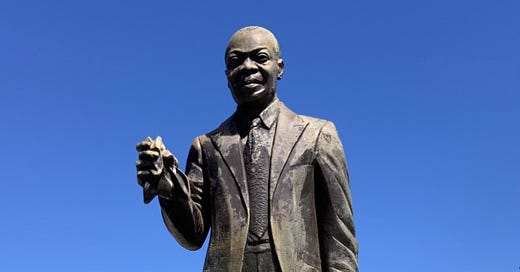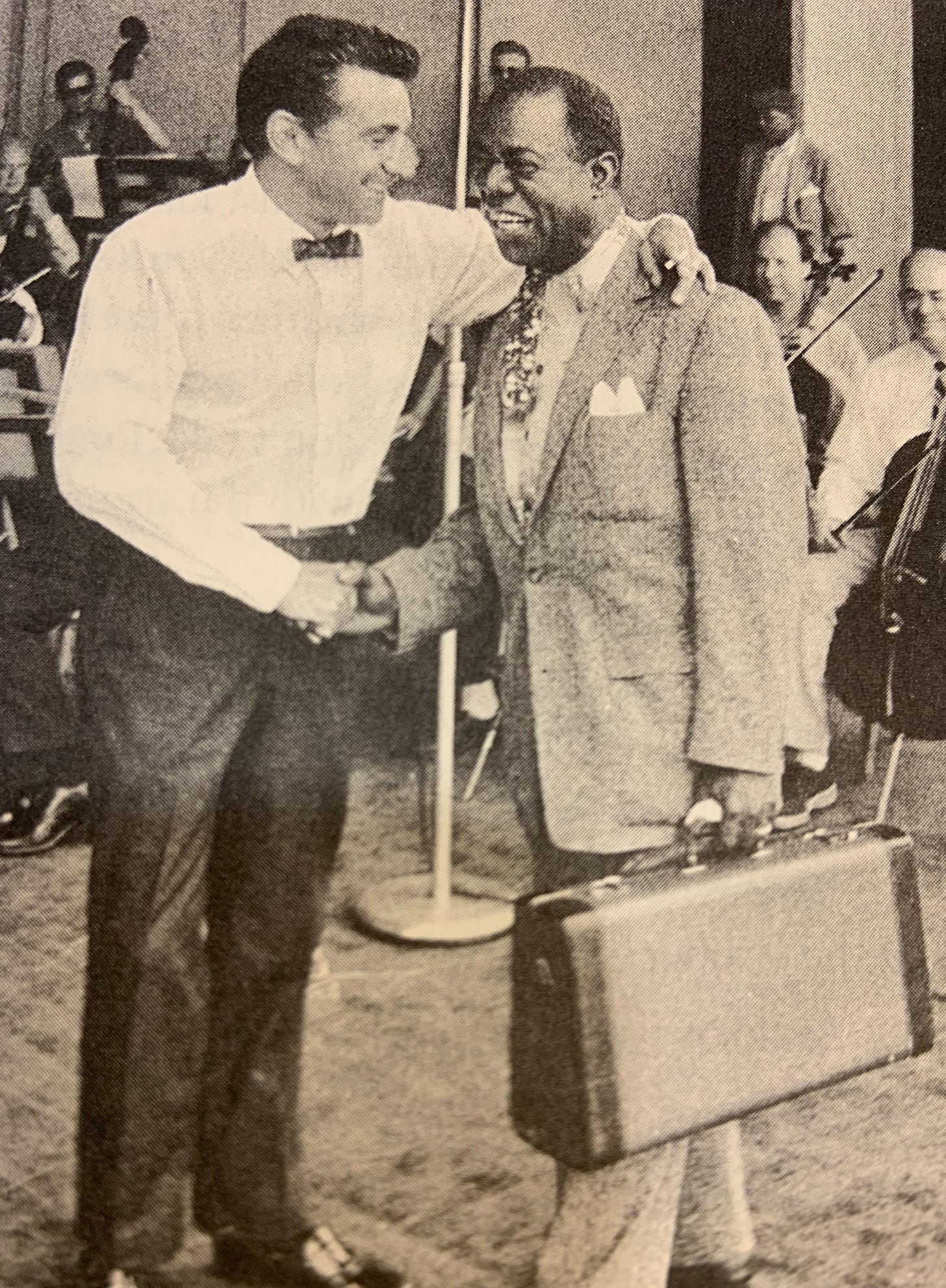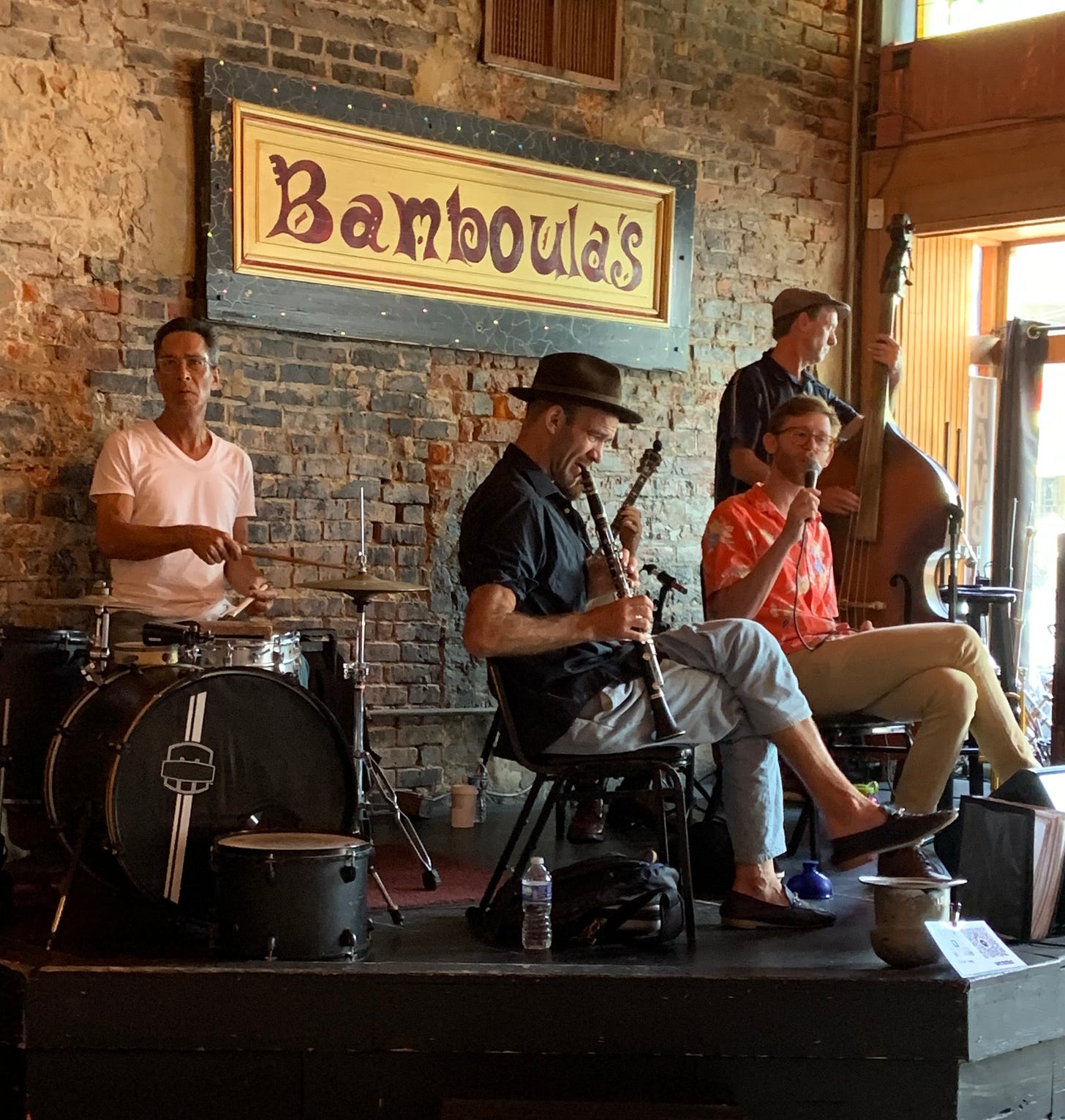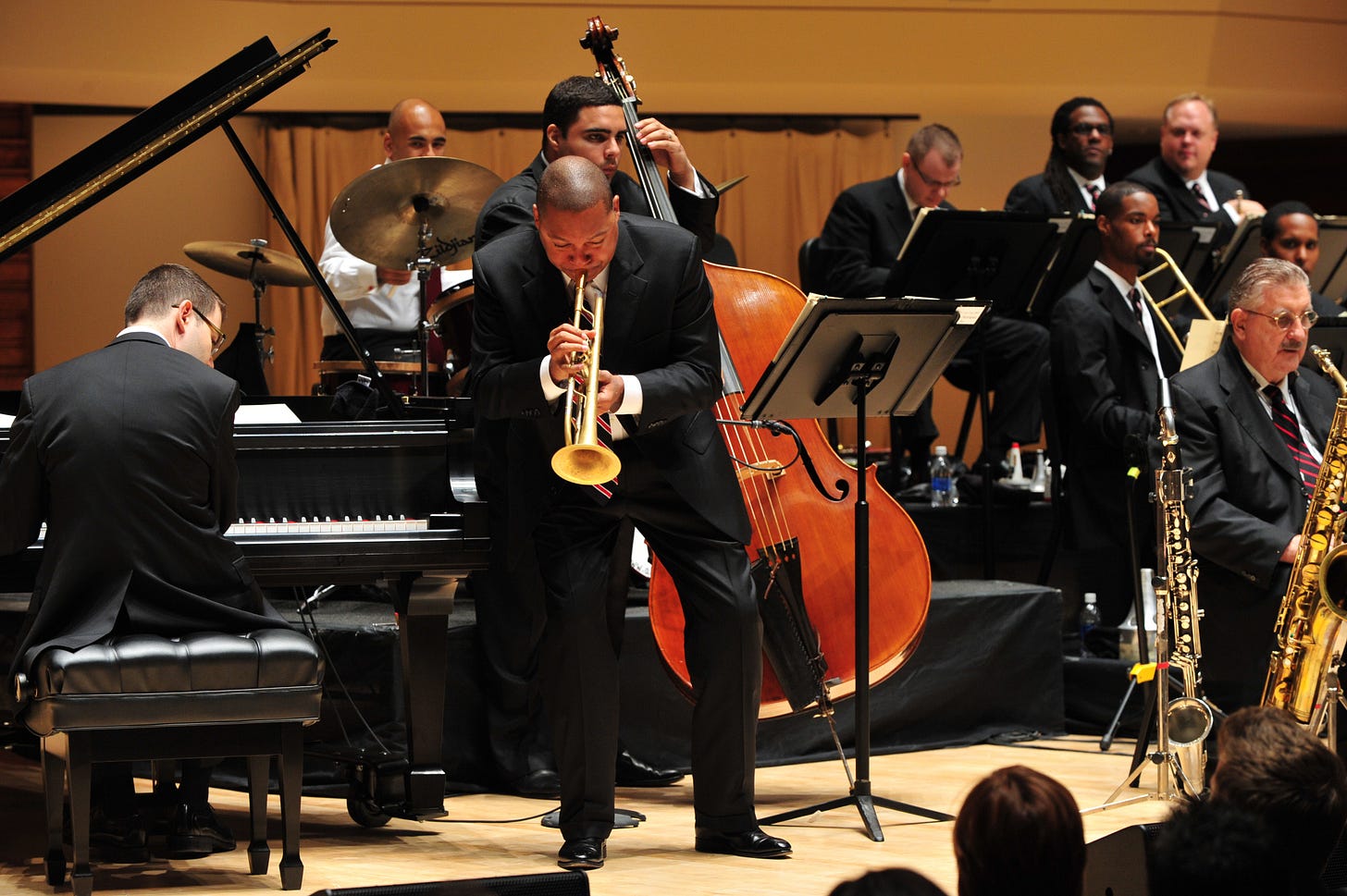Louis Armstrong Smoked 'Gage'—And Played a Smokin' Hot Trumpet Too
The saga of the great Satchmo, Wynton Marsalis, and 'Potato Head Blues'
“Ain’t nobody played nothing like it since, and can’t nobody play nothing like it now.” — Louis Armstrong, on his trumpet playing
Snoop Dogg, Willie Nelson, and Louis “Satchmo” Armstrong. What do they all have in common? Music, yes. What else? They all loved marijuana, although the G.O.A.T. of trumpeters and the man who revolutionized early jazz would not have referred to it by so formal a name. His favorite word for it was “gage.”
Other slang terms for weed in the Roaring Twenties and Depressing Thirties were “tea,” “muggles,” and “shit.” Frequent users of muggles, often musicians, were known as “vipers.” The King of the Vipers was Louis, who got this nickname the old-fashioned way: he earned it. Asked why he smoked tea every day, he said it “makes you feel good, man. It makes you forget all the bad things that happen to a Negro. It makes you feel wanted, and when you’re with another tea smoker it makes you feel a special kinship.” Fellow vipers Snoop and Willie could not have said it better.
It’s a safe bet that if Armstrong were alive today, at any stage of his life, he’d know and respect both Snoop’s and Willie’s music and be happy to fire up a “blunt” with them— contemporary lingo—at an after-party. The King of the Vipers was truly ecumenical in his tastes. He and Bing Crosby formed an unlikely mutual admiration society, the smooth white crooner singing with the exuberant, rough-voiced black man in the movies and on radio in an era when such integrated pairings were rare if not unheard of. Satchmo also admired the dance band stylings of Guy “Auld Lang Syne” Lombardo and even cut a blues number with hard-luck country music legend Jimmie Rodgers.
To later generations, Armstrong’s joyfully infectious 1963 vocal rendering of “Hello, Dolly” became a smash hit, and two other songs of his—“What A Wonderful World” in Good Morning Vietnam and “A Kiss to Build a Dream On” in Sleepless in Seattle—found new life in the movies well after his death in 1971.
While preparing and writing this piece, I listened to all these cats and their tunes—Louis in his older pop music years, his rambunctious “Now You Has Jazz” duet with Bing Crosby from High Society, both his and Willie Nelson’s covers on the Hoagy Carmichael classic “Stardust,” and even Snoop Dogg’s ribald party anthem “Gin and Juice”—as I worked my way back in time toward my ultimate destination.
Woody Allen once named Armstrong’s epic 1927 recording of “Potato Head Blues” as one of the things that made life, in his view, “worth living.” When it comes to traditional New Orleans-style jazz, the creative force behind Annie Hall, Manhattan and 48 other movies really knows his stuff. His films feature jazz artists and jazzy soundtracks, he’s a lifelong clarinetist who has recorded albums and toured internationally, and one winter many years ago I had the pleasure of hearing the poker-faced Woody sit in with the band at his regular Monday night gig at the old Michael’s Pub in midtown Manhattan.
So, following this lead, I figured I’d better do some catch-up because—this is an awful admission for a jazz lover to make—I had never heard the song before. So I cued it up on Spotify (no doubt it’s available on other music streaming services as well) and bent my ear to what the critic Terry Teachout described as “one of the greatest solos recorded by a jazzman [and] a landmark of modern music both musical and cultural.”
Teachout, who died far too young two years ago this January, was the drama critic of the Wall Street Journal and Commentary. He was also a jazz bassist, a real working musician whose splendid biography, Pops, is a rewarding read for anyone interested in the origins of jazz, the life of the great Satchmo, and the city of his birth where they named the airport after him and a ten- foot high bronze statue of his likeness stands in the center of Louis Armstrong Park on the edge of the French Quarter.
New Orleans is a river city, a food city and a let’s-throw-a-party city, a place where live New Orleans jazz—in the tradition of Louis, Sidney Bechet, and so many others—is played on the streets, in Preservation Hall, on paddlewheel boats loaded with tourists, and at clubs like Bamboula’s on Frenchman Street —not far from Armstrong’s boyhood home in the old black section of town known as Storyville.
Born and raised in a one-room shack in the segregated South at the turn of the 20th century, Louis as a boy scavenged through trash cans to find things to eat and sell. He was raised by a single mom whose deadbeat husband ran out on them. But the boy had a strong work ethic, an optimistic, resilient nature, and a flair for the cornet which he eventually gave up for the more expressive trumpet. From these humble origins he became the King of Jazz in an era when it was dismissed as race music, spelled “jass,” and not fit for respectable (i.e., white) audiences.
“This particular recording really gassed me,” Louis wrote later about the freewheeling jam session that produced “Potato Head Blues.” Indeed, it gassed anyone who heard it at that time, as it is the Jazz Age equivalent of Babe Ruth hitting 60 homers in a season or Lindbergh flying the Atlantic solo, two other culture-influencing events that occurred that same year. Terry Teachout’s description of it soars almost as high as Pops did when he was busting out all those notes:
“The climax of “Potato Head Blues, written by Armstrong, is what jazz musicians call a ‘stop-time’ chorus, meaning that the band marks the downbeat of every other measure with a staccato chord, falls silent for two bars, then plays another chord. Against this sparse background Armstrong flings a tune that links the chords together like a cable strung along a row of telephone poles.”
Unfortunately though, this timeless tune-flinging may fall on deaf ears for some, given the primitive nature of recording technology back then compared to that of today. The sound is simply not as good. Still, if you’re so inclined, take a musical time travel trip from Louis in 1927 up to Wynton Marsalis in 2023, and note the differences between the two. The latter is, in many ways, the spiritual godson of Satchmo—like him he plays a mean horn, was born and raised in New Orleans, and has evolved into a much-admired global ambassador for the art form invented in America.
Marsalis is also the Managing and Artistic Director of Jazz at Lincoln Center and president of the Louis Armstrong Educational Foundation. Last year he put together a stellar band for a live show in tribute to Armstrong and the Hot Fives and Hot Sevens, the two ad hoc groups that backed him on those historic sessions.
Their concert was turned into an album, and the album begins with Marsalis taking the spirited lead on “Potato Head Blues,” followed by other hot jazz staples: “Heebie Jeebies,” “Cornet Chop Suey,” “Basin Street Blues.” His playing and vocals on “St. James Infirmary” swings with sorrowful soul, it’s a song that stays with you, and this modern jazz virtuoso deserves all respect for who he is and what he does. But it’s not fair to compare Marsalis, now in his distinguished sixties, with Armstrong when he was skyrocketing into space in his twenties, fully lit and in his heat-seeking prime, blowing so hard and high on his mouthpiece that his lips split open and bloodied. As the King of Jazz said, describing that time, “I was young and strong, a flying cat, and God, I blew the people right out of that place.”
Marsalis would no doubt agree to that. So would Woody Allen. For that matter, so would Willie and Snoop who’d probably fire up a stick of gage in memory.
•
Let’s take this out on a high note. Here is a video of the great man himself, late in life, playing and singing and sweating up a storm in a rollicking performance of “Hello Dolly.” I believe the band leader and saxophonist is Stan Getz, although I could be very wrong about that. If anyone knows who he is, drop me a line in the comments box. I’d like to know.







